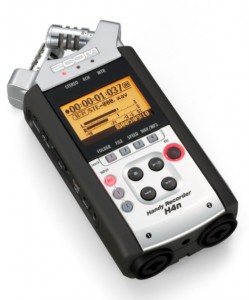
–The Musician’s Way, p. 58
How can we master unfamiliar music in ways that are both soulful and efficient?
In a few words, we have to be proficient with what I call the 3 components of deep practice: Discovery, Repetition, and Evaluation.
The 3 Components of Deep Music Practice
1. Discovery
Before we start playing or singing an unfamiliar composition, it’s crucial that we understand the music’s artistic and technical content.
Deep practicers, therefore, map out a composition’s expressive and technical features at the outset of learning, a process I term Discovery.
By grasping the expressive content of a piece, we integrate artistry into our every action, and then our technical choices fit a composition’s phrasing.
Pianist Leon Fleisher concurs: “Once you have a clear musical intention, then you can set up some kind of physical choreography.” (The Musician’s Way, p. 46)
For instance, after getting an overview of an entire piece, to begin our deliberate practice, we instrumentalists might isolate a phrase and expressively sing rhythms and melodies. Following that, we can determine fingerings, bowings and so forth for the phrase that match our interpretive ideas.
“Once you have a clear musical intention, then you can set up some kind of physical choreography.” -Leon Fleisher
2. Repetition
Repetition is the central act that builds our security and ease of execution, provided that we wisely manage repetition, emphasizing accuracy and expressiveness.
- When we encounter a passage with tricky rhythms, before playing the passage, we do well to vocalize the rhythms with the aid of a metronome.
- Next, we’d repeat the passage on our instrument at a slow tempo.
- After that, we’d tackle adjoining passages, and then link the passages, repeating the larger chunk a time or two.
- As large spans of a piece feel secure, we reiterate those portions at increasingly faster tempos.
How many times should we repeat a segment of music in practice?
With deep discovery – and by choosing accessible repertoire and suitably sized segments – our musical maps are so vivid that we don’t have to repeat much for passages to feel secure.
In fact, I advocate a “3-times rule”: if our mapping is thorough, a musical segment not overlong, and our tempo slow enough, it should suffice for us to do three consecutive error-free repetitions, provided that the music doesn’t exceed our technical capacity. That said, complex phrases may warrant five or more runs.
We need to remember, too, that repetition forms lasting mental pathways, so our repetitions should instill the habits of excellence that we need on stage.
Lastly, let’s acknowledge that we’re going to make mistakes in practice, and mistakes help us grow. But we must not repeat the same mistakes again and again.
“Repetition forms lasting mental pathways, so our repetitions should instill the habits of excellence that we need on stage.”
3. Evaluation
Evaluation forms the foundation of artistic growth. At every moment, we should compare how we sound and feel against the standards of excellence.
As we practice, we need to keep our senses on alert, listening intently, feeling acutely, and directing our music making with soulful awareness.
In tandem, we should regularly record ourselves and objectively listen back (the Zoom H4n is a top-ranked self-recording tool).
“We’re going to make mistakes in practice, and mistakes help us grow. But we must not repeat the same mistakes again and again.”
In sum, skillful discovery, repetition, and evaluation enable us to assimilate music so thoroughly that we can play or sing with little effort, opening the door to limitless artistic expression.
The Musician’s Way maps out a comprehensive approach to practice and performance that has received worldwide acclaim.
Related Posts
Assessing Your Practice Habits
Beautiful Repetition
A Different Kind of Slow Practice
Habits of Excellence
The Meaning in Mistakes
© 2014 Gerald Klickstein
Photo © Alenavlad, licensed from Shutterstock.com


